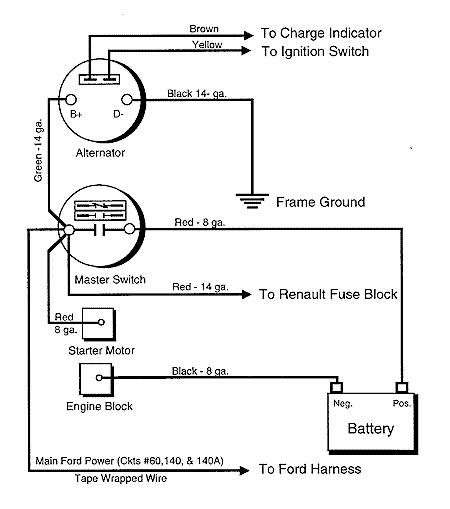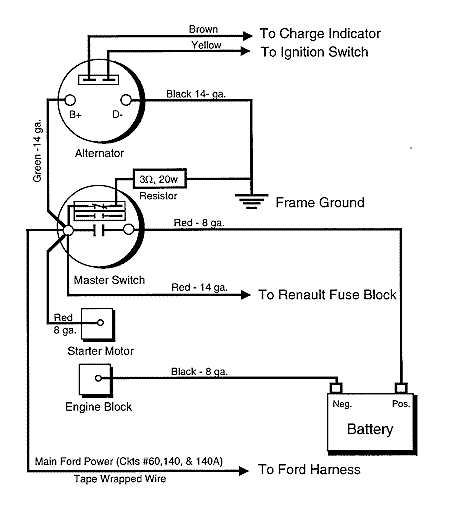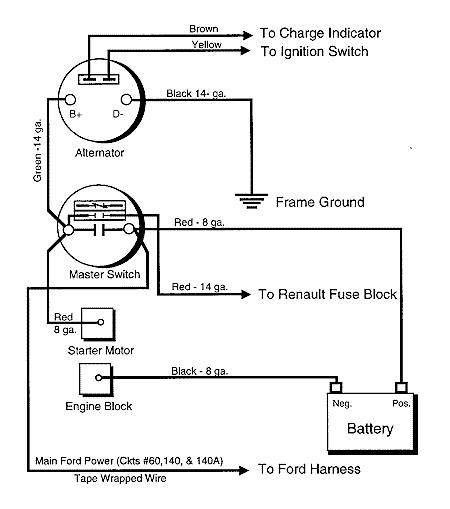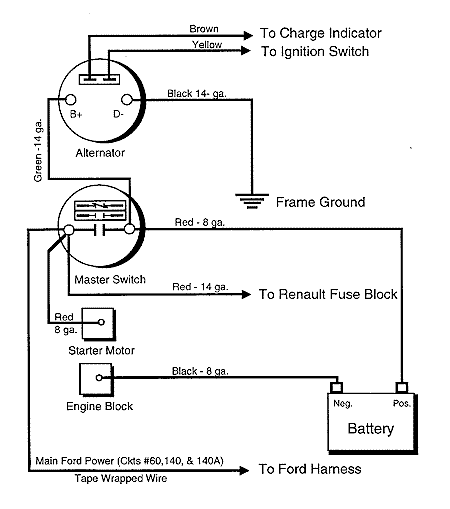Master Switch Wiring |
||
| Background | ||
| There have been at least 4 variations of wiring for the master switch on the SRF. In this article, I’ll review all 4 and present the pro’s and con’s of each. | ||
| Wiring Style #1 | ||
| This is the original wiring for the first 33 cars that were at the Runoffs in 1993. | ||
. |
||
| Pro’s | Con’s | |
| - No parts of the
car are “hot” with the master switch off. - Zero current drain when the master switch is off. |
-
Engine does not shut off when the master switch is opened. - Fault codes are not retained after the master switch is opened. - EEC “learned” information is lost when the master switch is opened. |
|
| Wiring Style #2 | ||
| Same as wiring style #1, but with a shorting resistor added to kill the alternator output when the master switch is opened -- thereby stopping the engine. | ||
 |
||
| Pro’s | Con’s | |
| - No parts of the
car are “hot” with the master switch off. - Zero current drain when the master switch is off. |
-
Engine shut off when the master switch is opened depends on the integrity of the shorting
resistor and its wiring. - Fault codes are not retained after the master switch is opened. - EEC “learned” information is lost when the master switch is opened. |
|
| Wiring Style #3 | ||
| Some significant changes here. This diagram appeared in the 2/17/94 update from Roush to SCCA Enterprises. In this wiring style, the power to the ignition switch is taken through the normally open auxiliary contacts of the master switch. Opening the master switch (putting it in the “normal” position), disconnects the battery from the alternator and the starter and --via the auxiliary contacts --- the alternator is disconnected from the ignition switch. The tape-wrapped EEC power wire remains connected to the battery at all times. This is the way my car is wired. | ||
 |
||
| Pro’s | Con’s | |
| - Fault codes are
retained after the master switch is opened. - EEC “learned” information is saved when the master switch is opened. |
- EEC
is “hot” at all times the battery is connected. - Clearing Fault codes requires disconnecting the battery. - EEC draws some (very small) current at all times |
|
| Wiring Style #4 | ||
| This is the current “Green Book” wiring scheme. | ||
 |
||
| Pro’s | Con’s | |
| - Zero current drain when the master switch is off. | -
Alternator is “hot” at all times the battery is connected. - Fault codes are not retained after the master switch is opened. - EEC “learned” information is lost when the master switch is opened. |
|
Rev. 3/14/98 |
||
